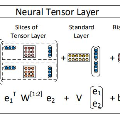The integration of satellite networks into next-generation mobile communication systems has gained considerable momentum with the advent of 5G Non-Terrestrial Networks (5G-NTN). Since established technologies like DVB-S2/RCS2 are already widely used for satellite broadband, a detailed comparison with emerging 5G NTN solutions is necessary to understand their relative merits and guide deployment decisions. This paper presents a user-centric, end-to-end evaluation of these technologies under realistic traffic conditions, showing how differences in architecture and protocols impact application-layer performance. Utilizing the 6G Sandbox platform, we employ OpenAirInterface to emulate 5G NTN and OpenSAND for DVB-S2/RCS2, replicating transparent payload GEO satellite scenarios under uniform downlink conditions. A range of real-world applications, such as web browsing, file downloads, and video streaming, are tested across both systems and systematically analyzed. While the emulation lacks real-time capability, it reveals key strengths and limitations of each approach, helping identify suitable deployment scenarios for 5G NTN and DVB-S2/RCS2.
翻译:暂无翻译





